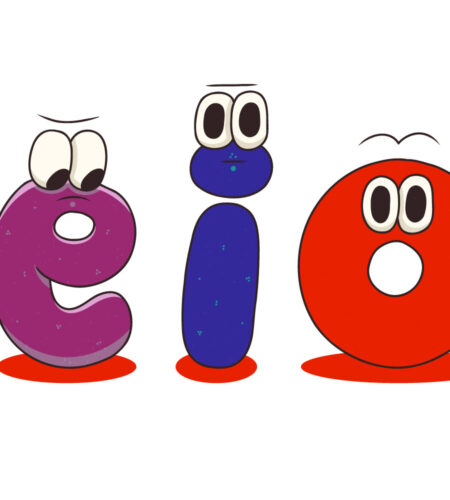Welcome to a vibrant journey where education meets creativity! Our Lowercase Vowels Coloring Pages offer an exciting way for kids to learn and have fun simultaneously.
Why are these vowels so important? They are the hidden gems within words, shaping our language and communication.
Why Coloring Lowercase Vowels Matters:
Enhanced Learning: Coloring engages visual senses, reinforcing letter recognition and aiding memory retention. Children learn while having a blast!
Boosts Creativity: Choosing colors and experimenting with shades fosters creativity. It encourages kids to think outside the box and express themselves artistically.
Improves Fine Motor Skills: Holding crayons and staying within the lines enhances fine motor skills, preparing kids for writing and other hands-on activities.
Fosters Confidence: Completing coloring pages successfully boosts self-esteem. It’s a small achievement that can lead to a positive attitude towards learning.
Interactive Learning: Parents and educators can engage kids in interactive discussions about colors, enhancing their language and communication skills.
The vowel a
The lowercase ‘a’ is a versatile vowel with a short and long sound. It appears in many words and is often the first vowel children learn to recognize. Words like “cat,” “bat,” and “map” showcase the short ‘a’ sound, while in words like “cake” and “name,” ‘a’ has a long sound, sounding like the letter’s name itself.

The vowel e
The lowercase ‘e’ is one of the most common vowels in the English language. It has a short sound, as heard in words like “pen,” “red,” and “wet.” ‘e’ also appears with a long sound in words like “see” and “me,” where it says its own name.

The vowel i
The lowercase ‘i’ can have both short and long sounds. In words like “sit,” “big,” and “win,” ‘i’ has a short sound. In contrast, in words like “time” and “bike,” ‘i’ has a long sound, similar to the letter’s name.

The vowel o
The lowercase ‘o’ also has short and long sounds. It sounds short in words like “dog,” “hot,” and “lock.” In words like “go” and “note,” ‘o’ has a long sound, pronounced like the letter’s name.

The vowel u
The lowercase ‘u’ has a short sound, as heard in words like “cup,” “sun,” and “fun.” It also appears with a long sound in words like “mule” and “cube,” where it says its name, similar to the letter ‘u.’

How to Use Our Coloring Pages:
Download: Simply download the printable PDFs of our Lowercase Vowels Coloring Pages.
Color: Let the creativity flow! Encourage your child to pick diverse colors for each vowel, making the process both educational and entertaining.
Display and Share: Once colored, display the artwork proudly. Share it with family and friends, fostering a sense of fulfillment.

Learning lowercase vowels is crucial for several reasons, particularly in early education:
- Foundation for Reading: Understanding lowercase vowels is fundamental for early readers. It helps children decode words and comprehend texts, laying the groundwork for fluent reading.
- Enhances Writing Skills: Proficiency in lowercase vowels ensures proper usage in writing. It enables children to express themselves coherently, enhancing their communication skills.
- Building Blocks of Language: Lowercase vowels, when combined with consonants, form the basis of words. Mastering them is essential for vocabulary expansion and understanding word structures.
- Improves Spelling: Knowing the correct placement of lowercase vowels in words aids in spelling. It prevents common spelling errors and promotes accurate written communication.
- Encourages Literacy Development: Lowercase vowels are pivotal in early literacy programs. They are often introduced first, providing a solid foundation for children’s literacy development journey.
- Preparation for Advanced Concepts: Proficient knowledge of lowercase vowels is necessary for learning more complex language rules, including grammar and syntax. It prepares children for advanced language skills.
- Boosts Confidence: Mastering lowercase vowels boosts a child’s confidence in reading and writing. Success in these fundamental skills enhances self-esteem and enthusiasm for learning.
- Supports Phonemic Awareness: Lowercase vowels are essential in phonemic awareness activities. Understanding their sounds and patterns helps children develop strong phonemic awareness, a vital skill for reading.
- Cultivates Language Fluency: Proficiency in lowercase vowels ensures smooth and fluent oral communication. It helps children articulate words and sentences clearly, fostering effective verbal expression.
In essence, learning lowercase vowels is a foundational step in a child’s language development journey. It equips them with essential skills, paving the way for successful communication, reading comprehension, and overall academic achievement.
Conclusion:
Our Lowercase Vowels Coloring Pages are more than just sheets to color; they’re stepping stones toward a lifetime of language proficiency and creative expression. Embrace the joy of learning with vibrant hues and watch your child’s imagination and skills flourish. Download now and let the colorful adventures begin! Learning has never been this much fun.
Download Now and Ignite Your Child’s Creativity!


Comments